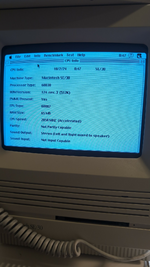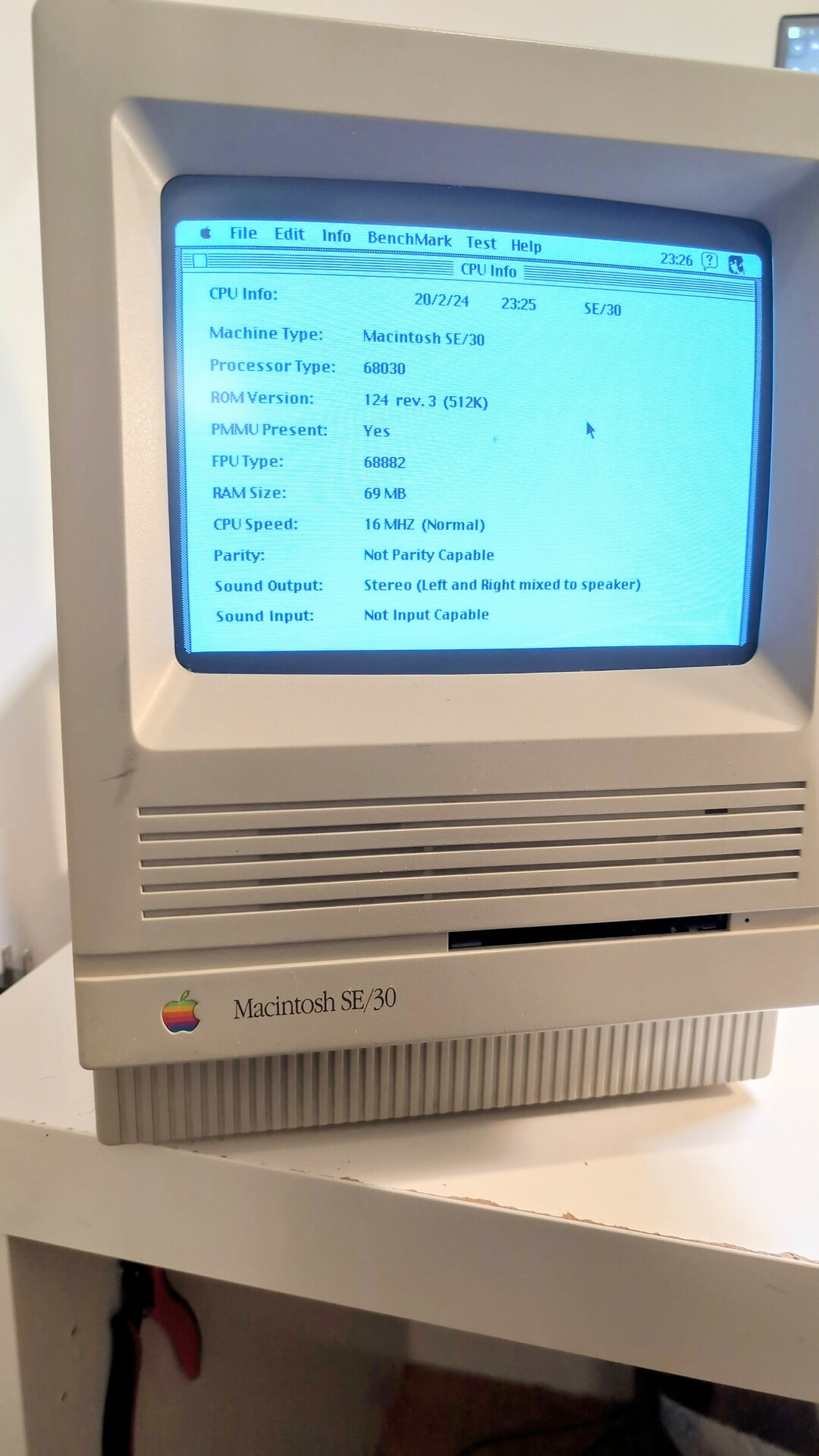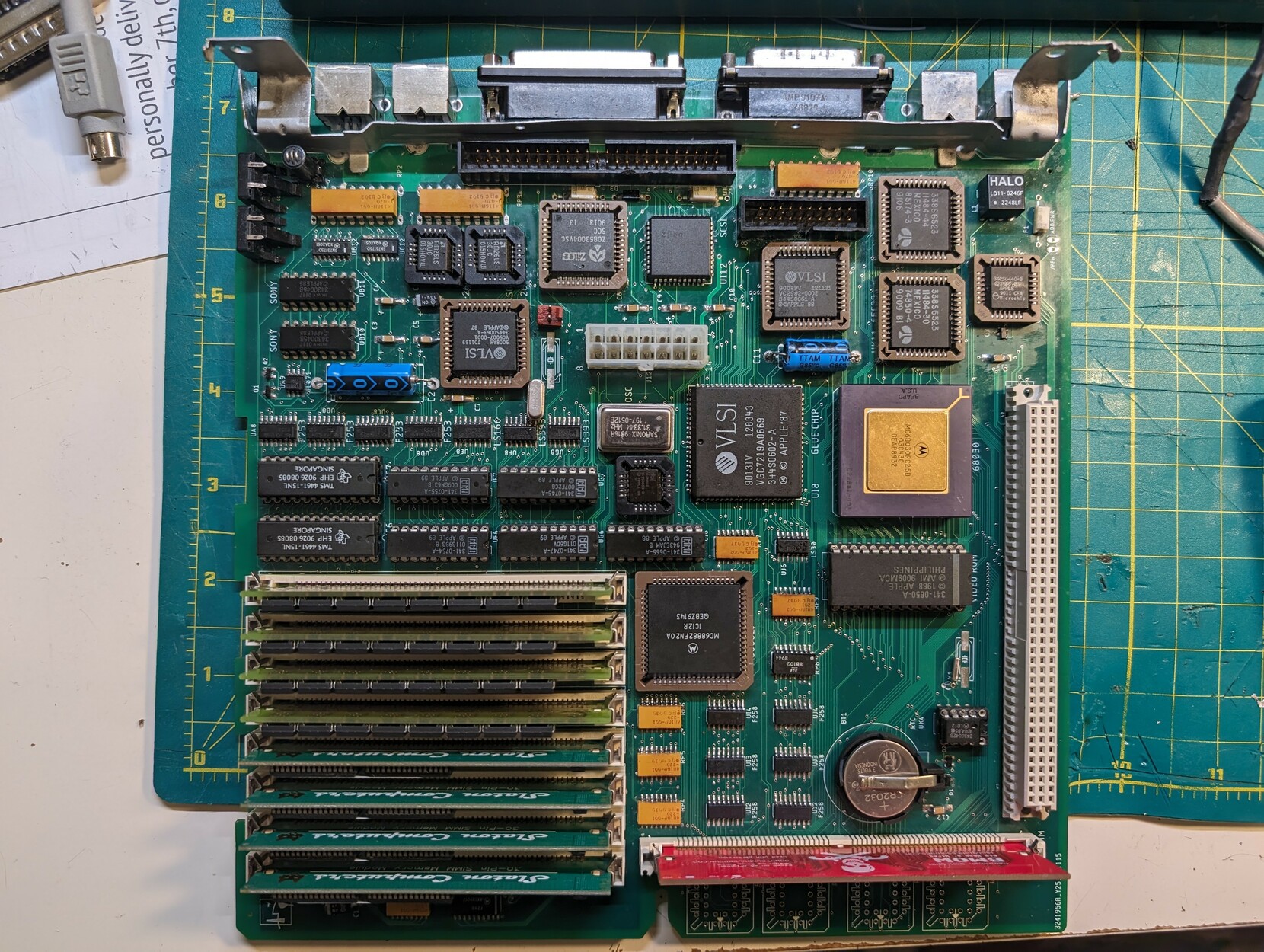mmjs
Member
Hey everyone,
This is a follow up to this thread which seemed to end in success, but after a couple of weeks using my newly rebuilt SE/30 Bolle board, I started to experience strange issues that resulted in non-functional FPU.
For context, my board is fully socketed and uses a Rominator II.
I first noticed intermittent SCSI problems. I'm noting because this may, or may not be related. They've occurred a few times, but for the most part SCSI is working fine.
Around the same time I also noticed intermittent crashes when downloading files via FTP. I went ahead and ran a Snooper test, which showed CPU and FPU failures, and reported obviously incorrect CPU frequency:

This was strange, but at this point I still didn't suspect the FPU. After a couple of reboots, the FPU would no longer work, and I actually stopped being able to boot into the system (System 7.1.1) at all. When I took out the FPU, I would get a stable system, but many applications would fail with "error of type 90" (i.e. "an FPU instruction was executed but the machine doesn't have an FPU") which makes sense.

I had another FPU that I thought was fine, and with this FPU the machine would boot successfully, but all applications requiring an FPU would fail with "error of type 1". Now this suggests that with this FPU the computer is aware that it has it, but it still fails to use it. At this point I suspected this unit as well, so I ordered a replacement.
Well, this replacement arrived today, and it fails in the exactly the same way with an "error of type 1" when an application needing an FPU is started.
I've verified all the connections between the FPU, the bus and GLUE, and they all check out. The one odd thing I did notice is that if I scope out the CS line, which is controlled by the GLUE chip, it stays high from the moment power is turned on, including when FPU-needing applications are started. There are however no indications that there's a short to 5V or another constantly high line that would explain this.
Any suggestions are very welcome!
This is a follow up to this thread which seemed to end in success, but after a couple of weeks using my newly rebuilt SE/30 Bolle board, I started to experience strange issues that resulted in non-functional FPU.
For context, my board is fully socketed and uses a Rominator II.
I first noticed intermittent SCSI problems. I'm noting because this may, or may not be related. They've occurred a few times, but for the most part SCSI is working fine.
Around the same time I also noticed intermittent crashes when downloading files via FTP. I went ahead and ran a Snooper test, which showed CPU and FPU failures, and reported obviously incorrect CPU frequency:

This was strange, but at this point I still didn't suspect the FPU. After a couple of reboots, the FPU would no longer work, and I actually stopped being able to boot into the system (System 7.1.1) at all. When I took out the FPU, I would get a stable system, but many applications would fail with "error of type 90" (i.e. "an FPU instruction was executed but the machine doesn't have an FPU") which makes sense.

I had another FPU that I thought was fine, and with this FPU the machine would boot successfully, but all applications requiring an FPU would fail with "error of type 1". Now this suggests that with this FPU the computer is aware that it has it, but it still fails to use it. At this point I suspected this unit as well, so I ordered a replacement.
Well, this replacement arrived today, and it fails in the exactly the same way with an "error of type 1" when an application needing an FPU is started.
I've verified all the connections between the FPU, the bus and GLUE, and they all check out. The one odd thing I did notice is that if I scope out the CS line, which is controlled by the GLUE chip, it stays high from the moment power is turned on, including when FPU-needing applications are started. There are however no indications that there's a short to 5V or another constantly high line that would explain this.
Any suggestions are very welcome!
Last edited:


